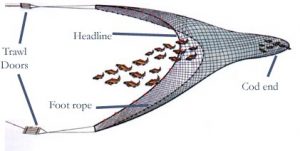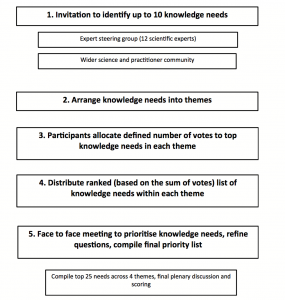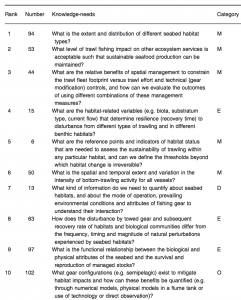Impact of Multiple Stressors on Sea Bed Fauna in a Warming Arctic
By: Brenna Bales, SRC Intern
The Arctic Ocean has been a heavily monitored area in recent years as climate change continues to affect the planet. This area is at high risk due to the fact that is has warmed at almost twice the rate as the rest of the planet in recent decades causing a decrease in sea-ice cover, glacial volume, and increases in temperature and precipitation (Hassol and Corell 2006). The Barents Sea is particularly vulnerable to climate change as it is experiencing the greatest temperature increases throughout the Arctic and may soon become an Atlantic-dominated climate region with warm and well-mixed waters, further preventing sea ice formation (Lind et al. 2018). Jørgensen et al. (2019) examined the Barents Sea benthic (seafloor) composition and how it has been affected by several stressors relating to climate change. Ecological impacts among the benthic environment were examined as a result of seawater warming, bottom trawling, and predation from a new, invasive predator: the snow crab (Figure 1).

Figure 1: Two snow crabs along the seafloor, a larger male above and a smaller female below. Image Credit: Derek Keats, Johannesburg, South Africa
The study characterized the vulnerability of different invertebrate groups when affected by these three variables across a predefined grid consisting of 36 x 36 nautical mile cells in the Barents Sea (Figure 2). Firstly, sensitivity to seawater warming between 2009-2011 (colder period) versus 2012-2015 (warmer period) was investigated. Both species temperature indices (a measure of the average temperature experienced by individuals across a species’ range) and community temperature indices were calculated by combining temperature values with information about the seafloor organism distribution. Secondly, species vulnerability to bottom trawling (Figure 3) was characterized by a species’ morphology, mobility, and body size. Slower, larger, and taller animals were categorized as having a larger susceptibility to trawling effects, whereas quicker, smaller animals would be more resilient. Lastly, the predatory effects of the invasive snow crab were quantified by number of prey items and annual biomass (amount of prey) consumed.

Figure 2: Geographic location of the Barents Sea with the 2280 sampling locations from the present study (Jørgensen et al. 2019).

Figure 3: Depiction of the practice of bottom trawling (Source: NOAA.gov).
From the initial, colder period (2009-2011) to the latter, warmer period (2012-2015), there was an increase in organisms with warm-water affinities and a reduction in those with cold-water affinities. While the overall sensitivity to temperature of the communities decreased with time, areas that were further north into the Arctic showed a higher vulnerability to temperature changes than more southern areas continuously experiencing warming waters. The sensitivity to trawling was lowest in the center region of the Barents Sea and increased toward outer regions. Lastly, the sensitivity to snow crab predation was highest along the northwestern border connecting to the southeastern border of the study area. Overall, the northwestern area of the Barents Sea was found to be the most vulnerable area when all three variables were combined. In conclusion, the combination of multiple stressors in any particular area can have severe consequences on the resilience of a local community to change. Management in the form of closed areas or gear modification is thus highly recommended by researchers from this paper to lessen the threats that these communities, especially those of the northwestern Barents Sea, are facing.
Work Cited:
Hassol, S.J. and Corell, R.W., 2006. Arctic climate impact assessment. Avoiding dangerous climate change, p.205.
Jørgensen, L.L., Primicerio, R., Ingvaldsen, R.B., Fossheim, M., Strelkova, N., Thangstad, T.H., Manushin, I. and Zakharov, D., 2019. Impact of multiple stressors on sea bed fauna in a warming Arctic. Marine Ecology Progress Series, 608, pp.1-12.
Lind, S., Ingvaldsen, R.B. and Furevik, T., 2018. Arctic warming hotspot in the northern Barents Sea linked to declining sea-ice import. Nature Climate Change, 8(7), p.634.



